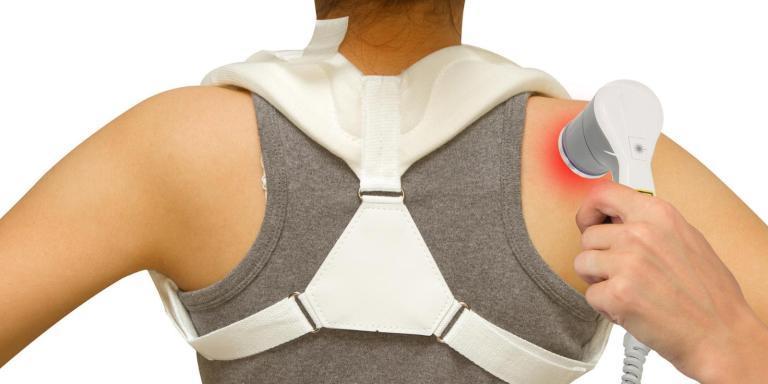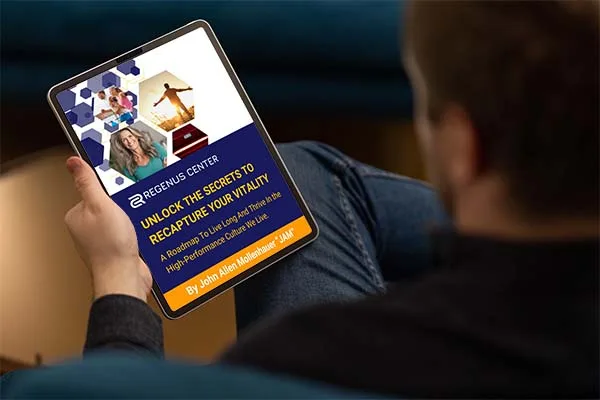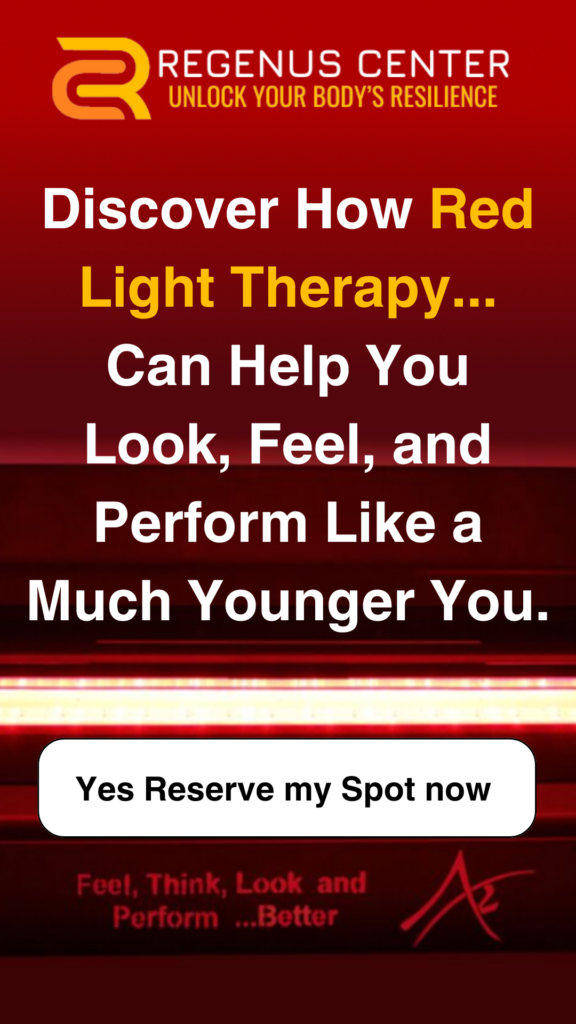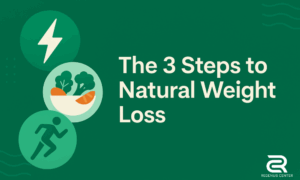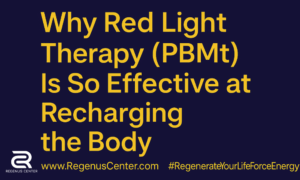Clinicians, performance recovery and wellness centers like Regenus Centers, are using Class IV, High-Intensity laser therapy more often than ever before to help reduce pain and inflammation related to many common conditions.
High-Intensity Laser technology is based on the proven principle of low-level laser therapy (LLLT) only it’s stronger. In contrast to Class 1, 2, and three low-level lasers (LLLT) with low power (0.5 Watts) resulting in limited dosage levels; high intensity incorporates advanced Class 4 laser technology which is up to 1,200 times more powerful providing power levels of 1- 30 Watts.
These higher powers, in combination with proper wavelengths, laser beam size, and treatment techniques, enable clinicians to:
- safely and effectively deliver significantly higher dosage levels (the key to success)
- penetrate deeper into the cellular tissue
- provide better and longer-lasting clinical outcomes
Thousands of clients have experienced the power of high-intensity laser therapy and are familiar with its therapeutic effects, but for those who aren’t, here are seven things everyone should know about how high-intensity laser therapy eliminates pain naturally with the power of light.
1: LASER: (Light Amplification by Stimulated Emission of Radiation).[i]
All light is not the same. It is measured in wavelengths, with each wavelength of light representing a different color of the spectrum.
LASER, visible and near infrared (NI) light can be used as a therapeutic device which produces monochromatic (one specific wavelength), coherent (constant phase) and polarized (directional) light.
Near-infrared (NI) light uses invisible, near-infrared wavelengths between 700 and 1200 nm. Many published studies refer to the use of a laser as Low-Level Laser Therapy (LLLT) or High-Intensity Laser Therapy (HILT). Laser studies have been performed with isolated live tissue samples, animals, and human subjects.
2: A New Approach to Achieving Outcomes with Laser Therapy
The use of a laser is a high tech, non-invasive approach to therapy and healing that is reshaping medicine and the way that patients are being treated while improving human health through photomedicine solutions. Research is quickly progressing in identifying conditions that can be treated effectively and in facilitating new development in therapy laser technology.
The traditional understanding of a laser is a device that generates an intense beam of coherent monochromatic light (or other electromagnetic radiation) by stimulated emission of photons from excited atoms or molecules. Lasers are used in drilling and cutting, alignment and guidance, and surgery; but none of these are therapeutic lasers.
High-intensity lasers used for Therapeutae purposes, unlike surgery or injections and prescriptions which just mask the symptoms and do nothing to treat the injury, delivers light energy units, in the form of photons, to damaged cells. These photons absorbed by the cells through laser therapy stimulate the mitochondria to accelerate the production of Adenosine Triphosphate (ATP). This biochemical increase in cell energy is used to help transform cells from a state of illness to a stable, healthy state. The result is it reduces inflammation, increases blood flow, stimulates tissue growth, and helps aid the body’s healing process.
3: High-Intensity laser reduces pain and inflammation without side effects
Laser therapy uses a process called Photobiomodulation. Photons enter the tissue and interact with the cytochrome c complex within mitochondria. This interaction triggers a biological cascade of events that leads to an increase in cellular metabolism and a decrease in both pain and inflammation. Unlike medications, laser therapy reduces pain without undesirable side effects.
It is also important to point out that patients report long-lasting pain relief. While the number of treatments required may vary depending on the acuity of the condition, many patients experience lasting relief after only a couple of treatments—typically 6-10 treatments.
4: Can be used for acute and chronic conditions
When treating acute conditions with laser therapy, it is particularly effective when it is administered as soon as following possible injury (assuming there is no active hemorrhaging). The faster the inflammation is reduced, and the healing process can begin, the better. In the case of acute injury, laser therapy helps to restore the body to normal function quicker.
With chronic conditions, laser therapy is used most often to help combat persistent pain and inflammation. The new Class IV Aspen Summit Laser Therapy is being used by clinicians at Regenus Center to quickly reduce inflammation in patients suffering from chronic pain. This therapy laser is especially well-suited for treating chronic conditions, like back pain, foot pain and the like, because it enables clinicians to treat a wider area of interest while still delivering therapeutically relevant dosages.
5: Treatments can be customized for each situation
Lasers that have larger power ranges offer versatile treatment options. A laser that can be set to operate from 0.5 W up to 25 W allows the clinician flexibility to treat low and slow or at maximum output.
The availability of multiple treatment heads offers additional flexibility for the clinician. Regenus Center, for example, use the Aspen High-Intensity Laser. With maximum adjustable power outputs up to 20 watts, the Summit Series Laser System provides endless treatment options and versatility for a broad variety of patients and conditions.
It is important to have several delivery options to ensure the delivery method is appropriately matched to the situation. For instance, when treating over bony prominences, an off-contact treatment method is advisable. However, when treating deep-tissue structures, such as a hamstring, an on-contact massage ball attachment is best to reduce reflection and scattering and encourage deeper penetration by displacing excess fluids.
Laser diodes are the heart of the laser unit and have been selected for high levels of quality, efficiency, and reliability.
6: Treatments Feel Good
One common question related to laser therapy is, “What does it feel like?” Depending on the laser, it can create little to no sensation, or it can create a gentle, soothing warmth. Many patients receiving high-intensity Laser Therapy treatments report enjoying the experience, especially when they feel like a “laser massage.”
Patients receiving treatments with higher-power lasers also frequently report a rapid decrease in pain. For someone suffering from chronic pain, this effect can be particularly pronounced.
7: Treatments Are Fast
At Regenus Centers, with Aspen Lasers, treatments are quick, usually 10 minutes depending on the size, depth, and acuteness of the condition being treated and whether we need to treat tributary areas. High-Intensity lasers can deliver a lot of energy in a small amount of time, so therapeutic dosages are achieved quickly. For people with packed schedules, patients and clinicians alike, fast and effective treatments are a must.
Learn more about Hight Intensity Laser Therapy here, then call us to schedule a consultation and session.
Hamblin MR, Demidova TN. “Mechanisms of low-level light therapy.” Proc. of SPIE Photonics.2006; 6140: 614001-01-12. doi: 10.1117/12.646294
Kingsley JD, Demchak T, Mathis R. “Low-level laser therapy as a treatment for chronic pain.” Frontiers in Physiology. 2014; 5(306): 1-3. doi: 10.3389/fphys.2014.00306
[i] The Science of Photobiomodulation, Aspen Laser Systems.
General Disclaimer: These services are not intended to diagnose, treat, cure or prevent any disease. This Website offers health and fitness advice. This advice is designed for educational purposes only and is not intended to replace the advice, treatment, or diagnosis of a healthcare professional. Always consult your physician before beginning any therapy program. You agree that you assume all responsibility when choosing to act on any of the health or fitness advice contained on this Website. We reserve the right to amend this policy at any time without any prior notice to you.

